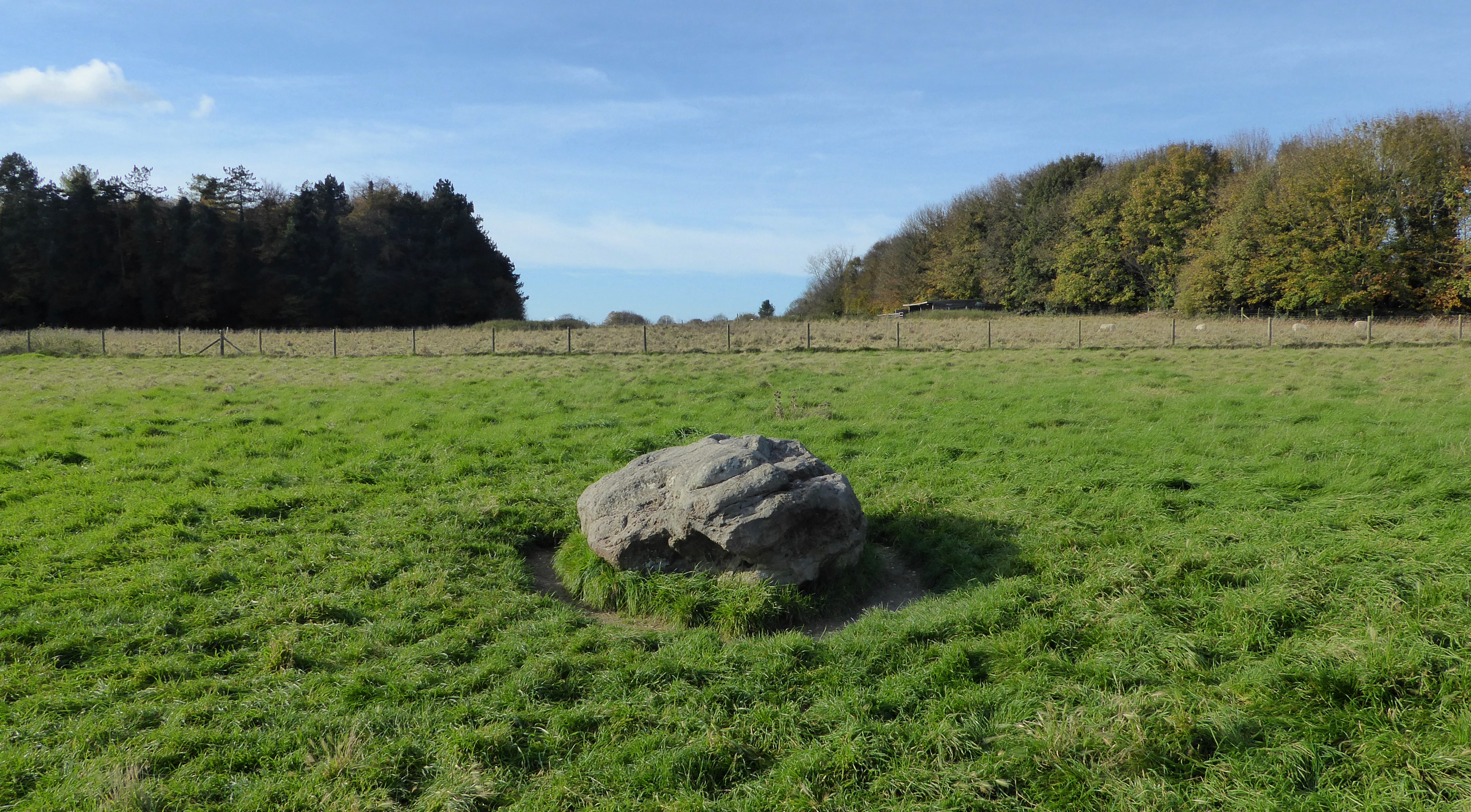Cuckoo Stone on:
[Wikipedia]
[Google]
[Amazon]
The Cuckoo Stone is a

 The Cuckoo Stone is a squat
The Cuckoo Stone is a squat
Cuckoo Stone 1.jpg
Cuckoo Stone 2.jpg
Cuckoo Stone 3.jpg
Cuckoo Stone 4.jpg
Cuckoo Stone 5.jpg
Neolithic
The Neolithic period, or New Stone Age, is an Old World archaeological period and the final division of the Stone Age. It saw the Neolithic Revolution, a wide-ranging set of developments that appear to have arisen independently in several parts ...
or Bronze Age
The Bronze Age is a historic period, lasting approximately from 3300 BC to 1200 BC, characterized by the use of bronze, the presence of writing in some areas, and other early features of urban civilization. The Bronze Age is the second pri ...
standing stone. The stone, which is now fallen, is in a field near to Woodhenge
Woodhenge is a Neolithic Class II henge and timber circle monument within the Stonehenge World Heritage Site in Wiltshire, England. It is north-east of Stonehenge, in Durrington parish, just north of the town of Amesbury.
Discovery
Woodheng ...
and Durrington Walls
Durrington Walls is the site of a large Neolithic settlement and later henge enclosure located in the Stonehenge World Heritage Site in England. It lies north-east of Stonehenge in the parish of Durrington, just north of Amesbury in Wiltshir ...
in Wiltshire
Wiltshire (; abbreviated Wilts) is a historic and ceremonial county in South West England with an area of . It is landlocked and borders the counties of Dorset to the southwest, Somerset to the west, Hampshire to the southeast, Gloucestershire ...
, England (). It is part of the wider Stonehenge Landscape
The Stonehenge Landscape is a property of The National Trust, located on Salisbury Plain in Wiltshire, England. The estate (formerly known as Stonehenge Historic Landscape and before that as Stonehenge Down) covers surrounding the neolithic mo ...
.
Description

 The Cuckoo Stone is a squat
The Cuckoo Stone is a squat sarsen stone
Sarsen stones are silicified sandstone blocks found in quantity in Southern England on Salisbury Plain and the Marlborough Downs in Wiltshire; in Kent; and in smaller quantities in Berkshire, Essex, Oxfordshire, Dorset, and Hampshire.
Geology ...
which lies on its side. It is the same type of stone as the largest stones used in the Stonehenge
Stonehenge is a prehistoric monument on Salisbury Plain in Wiltshire, England, west of Amesbury. It consists of an outer ring of vertical sarsen standing stones, each around high, wide, and weighing around 25 tons, topped by connectin ...
circle. The site of Woodhenge
Woodhenge is a Neolithic Class II henge and timber circle monument within the Stonehenge World Heritage Site in Wiltshire, England. It is north-east of Stonehenge, in Durrington parish, just north of the town of Amesbury.
Discovery
Woodheng ...
is around 500 metres to the east of the Cuckoo Stone, with Durrington Walls
Durrington Walls is the site of a large Neolithic settlement and later henge enclosure located in the Stonehenge World Heritage Site in England. It lies north-east of Stonehenge in the parish of Durrington, just north of Amesbury in Wiltshir ...
to the northeast. Stonehenge is around 2.5 kilometres to the southwest. The Cuckoo Stone was recorded by Richard Colt-Hoare on his 1810 map of the Stonehenge landscape. The nearest other known sarsen stone is that found within Woodhenge during excavations in 1926-28.
Excavations
The site was excavated in 2007 as part of theStonehenge Riverside Project
The Stonehenge Riverside Project was a major Arts and Humanities Research Council-funded archaeological research study of the development of the Stonehenge landscape in Neolithic and Bronze Age Britain. In particular, the project examined the rela ...
. The excavations revealed the pit in which the stone once sat immediately to the west. The stone was originally a natural feature, which sometime before 2000 BC, was placed in an upright position. A posthole was found in the pit, indicating that a wooden post had been placed in the hole for a time before being replaced by the upright stone. Around 2000 BC the Cuckoo Stone became the focus for several nearby cremation burials.
In the Roman era
In modern historiography, ancient Rome refers to Roman civilisation from the founding of the city of Rome in the 8th century BC to the collapse of the Western Roman Empire in the 5th century AD. It encompasses the Roman Kingdom (753–509 BC ...
a rectangular building was constructed southwest of the Cuckoo Stone. The presence of pits and a scatter of coins suggest that the building was a small shrine.
Gallery
See also
*Gowk stane
The name gowk stane ( en, cuckoo stone or fool's stone) has been applied to certain standing stones and glacial erratics in Scotland, often found in prominent geographical situations. Other spelling variants, such as gowke, gouk, gouke, goilk, g ...
References
{{Commons category, Cuckoo Stone Archaeological sites in Wiltshire Megalithic monuments in England Sites associated with Stonehenge